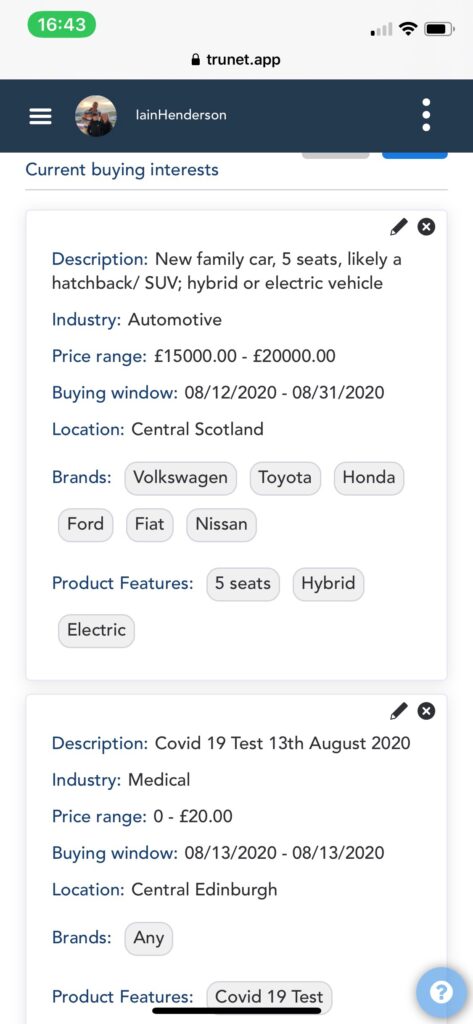
Every customer is familiar with Customer Relationship Management (aka CRM). They meet it when they get personal offers, when they call customer service, or any time they deal with companies that seem to know who they are.
Doing this is a huge business, passing $40 billion worldwide in 2018, and expected to be twice that in 2015. All of CRM is also B2B: business to business. Salesforce, SAP, Microsoft Dynamics, Oracle, Adobe and IBM don’t sell their CRM services to you and me (that would be B2C—business to customer). They sell it to the companies that want to relate to you on other than a cash-only basis.
CRM is also becoming more visible. The Salesforce Tower in San Francisco now dominates the city’s skyline, while the company itself was just added to the Dow Jones index, while other blue chip companies, such as Exxon, were dropped.
And the category is shaking up from the inside. Especially notable is Bob Stutz‘ move from Salesforce to SAP. He’s now Head of Customer Experience (aka CX) there.
It is in his new capacity that Bob argues, in an excellent interview, for restoring the full value of CRM’s middle name: Relationship.
The interview is significant, because Bob is, in many ways, the founder of the CRM software category, having started as product owner at Siebel then working at various times in similar roles at Oracle, SAP, HP, Microsoft, Salesforce.
He’s now back at SAP, and in reflective mood as to how CRM software has evolved, and what needs to be done next. It’s fair to say that he is not overly impressed with the current state; and seems to be in a mood to fix that. Given SAP’s German roots and that EU is getting behind more ‘human-centric’ approaches to personal data, it may well be that he is able to take CRM in a new and fruitful direction.
Here are a few thoughts that occur would be worth considering for moving CRM forward in a significant way. I am speaking here from the customer side, albeit from also having spent many years running customer management in large organisations (so have insight into what works/ does not work in and around CRM at present). Here goes:
1) We would clearly separate B2C CRM capabilities from B2B CRM capabilities; the latter needs a sales force/ team and lots of bells and whistles, while the former does not and needs a different set of bells and whistles. The current model applies B2B principles to B2C markets and that really just does not work.
2) To fix B2C CRM (our main interest in Customer Commons), we would remove the Sales/ Sales force Automation piece from the newly formed B2C CRM. Then we’d move the marketing part of CRM over to the side of the customer; we’d do so by re-inventing the concept of the preference centre: make that meaningful so a customer or potential customers can genuinely get what they want to get, and not get what they don’t want to get.
3) So in B2C, one is left with customer controlled data (including demand or buying intention data), permissions and preferences. Then the whole customer service piece would see co-managed data between individuals and their suppliers using common processes and tools. So both parties have tools to manage their products and services data. More on that below.
The over-riding raison d’être we’d place on forcing the above change through (if we were in a position to do so) would be that ‘CRM needs to re-think the R part’. That is to say, the bit that has gone so badly wrong is in how RELATIONSHIP is handled. It is definitely not the case that individuals do not wish to have relationships with SOME of their suppliers and have one anyway with SOME of their products and services; so let’s that a meaningful rather than the current abusive relationship.
That requires tools on the side of the customer. We call these Vendor Relationship Management (aka VRM) tools. (Explained here.) Many of these already exist (here’s a long list), with category names such as intentcasting and Personal Information Management Systems (PIMS) — though all are still nee and do not yet popular at scale.
In this model, both parties come to the market’s table with relationship management tools: B2C becomes CRM+VRM. And both have reasons to co-manage the relevant data between them.
The screenshot below shows tools on the individual side for managing their ‘stuff’ (i.e. products and services); they do so in the same way for all products and services, and can make that data accessible to their suppliers who may wish to act on it, augment it, and ultimately co-manage it.
The same principles apply to individuals making their buying intention data available to the market in standard ways (example below). Both of the above, with appropriate, pro-active permission, can be used to drive digital advertising, marketing and customer service related communications.
So what the customer is asking for from the CRM service providers, is ways to plug in their own standardised, ultra-modern customer-side capabilities that enable both parties to engage in mutually beneficial activities. That model begins to feel more like a working relationship……













